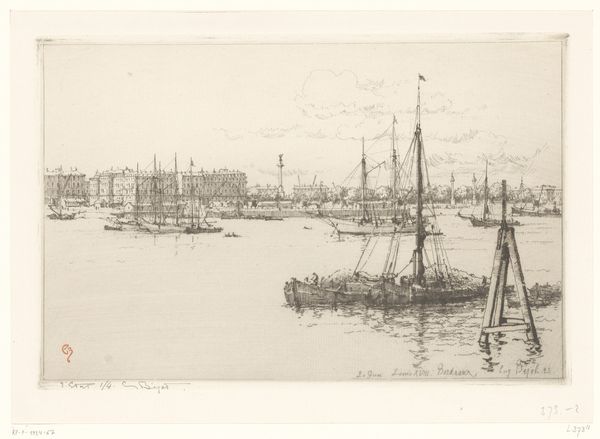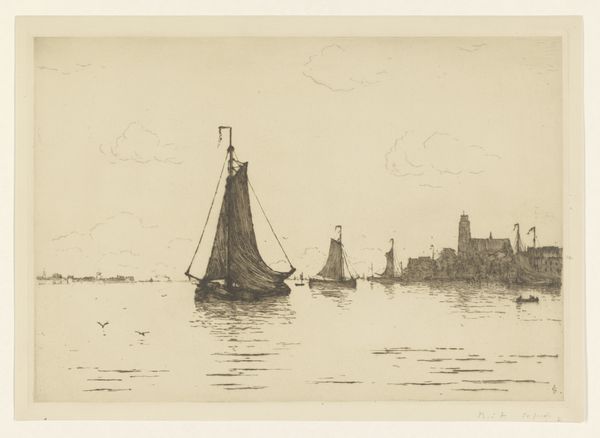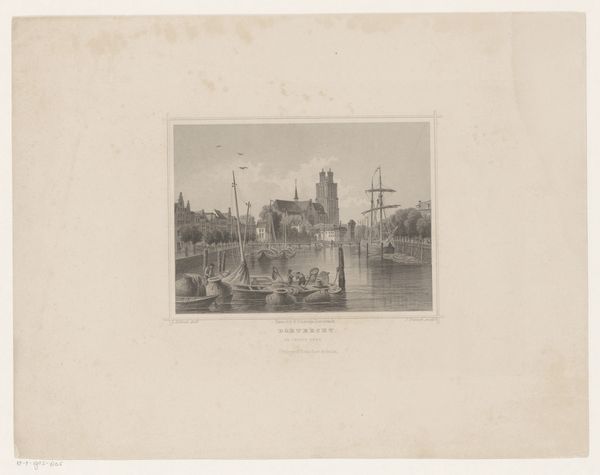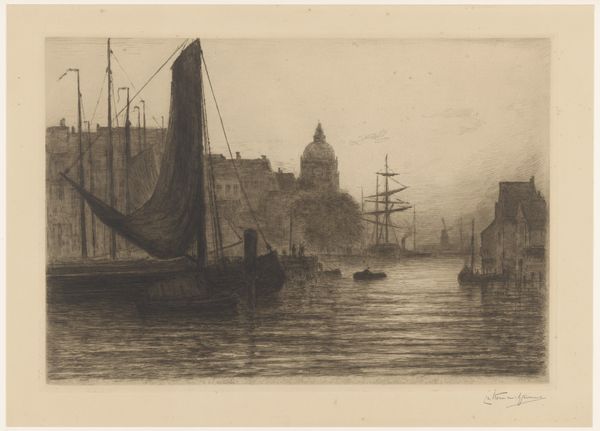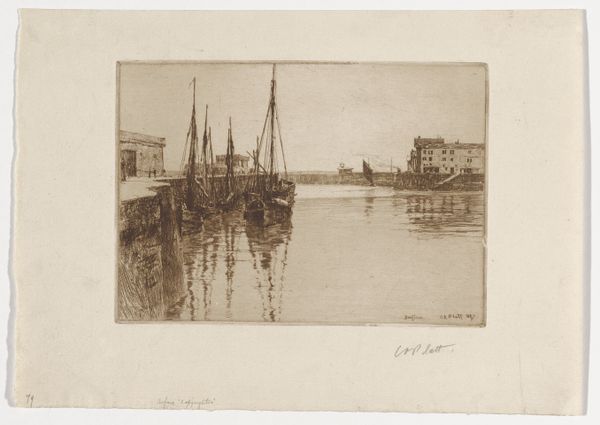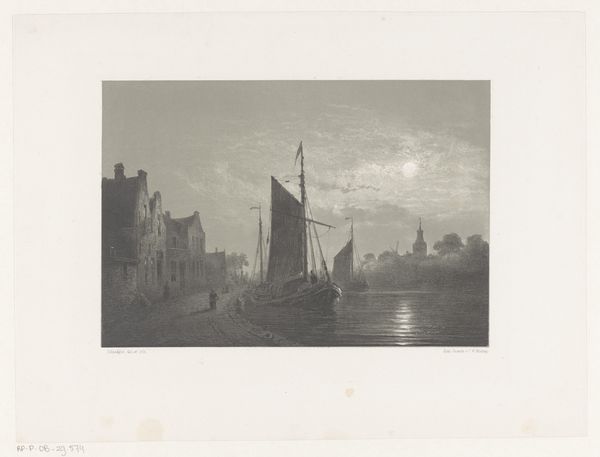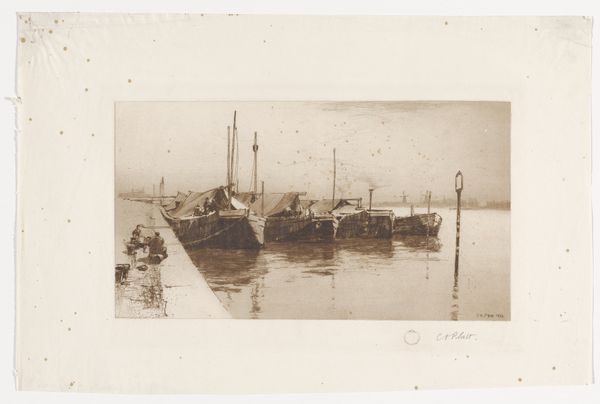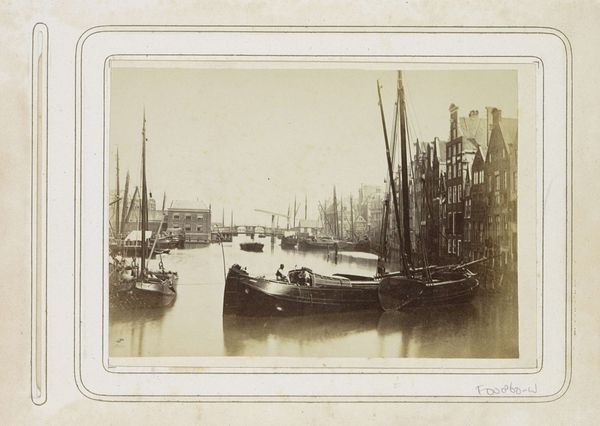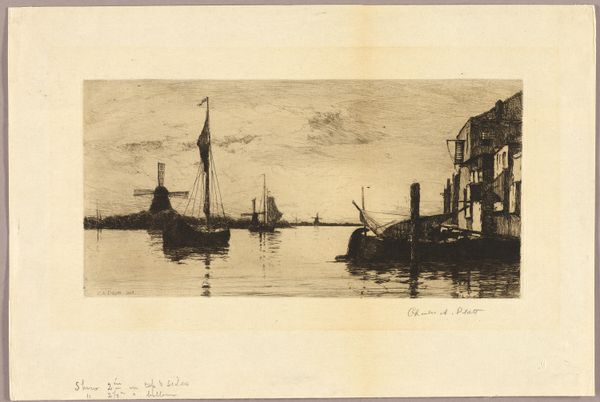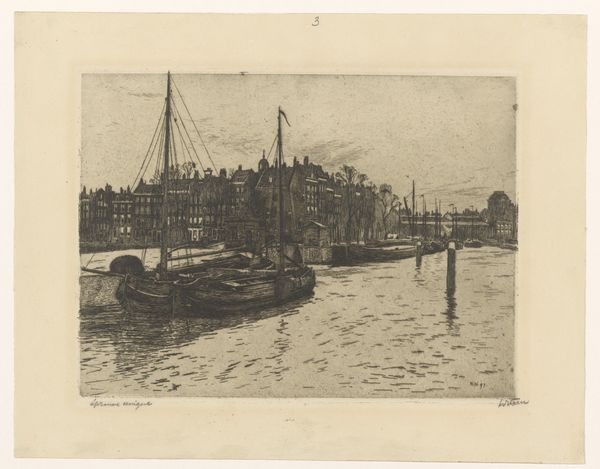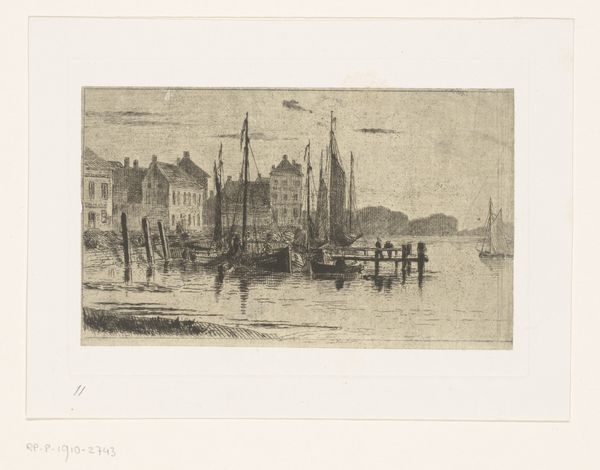
Dimensions: height 307 mm, width 468 mm
Copyright: Rijks Museum: Open Domain
Editor: Henri-Charles Guérard's "View of Venice," dating from 1856-1897, an etching currently housed in the Rijksmuseum... There's a sort of hazy tranquility to it, almost dreamlike. The water is so still, reflecting the city. What's your take on it? Curator: This etching offers us a glimpse into the late 19th-century fascination with Venice, a period when the city became a popular subject for artists and tourists alike. It’s essential to consider how Venice was marketed and consumed. Can you imagine this print being part of a portfolio marketed to wealthy Europeans embarking on the Grand Tour, reinforcing certain romantic notions? Editor: So, less about pure artistic expression, and more about… consumerism? Curator: Exactly. The "Orientalism" tag is intriguing too. While Venice is in Europe, it occupied a liminal space in the European imagination – a place where East met West. Note the artist's emphasis: the hazy atmosphere, the almost mystical quality of the architecture in the distance. These elements played into certain romanticized views that were popular at the time. What about the people? Editor: The figures seem tiny, almost insignificant compared to the grand architecture. Are they even relevant? Curator: I would say, that their marginalisation serves the same function as the architectural scale. Touristy, perhaps? Venice became a stage, a backdrop for an experience that confirmed one's status, access, and even their cultural sensibilities. It suggests the individual's relationship with the space – observing rather than truly inhabiting it. Editor: So it's not just a pretty picture, it's a document reflecting a specific socio-economic perspective. Thanks, that really changed how I see it. Curator: Precisely. Looking at art this way reveals hidden stories and complicates simple aesthetic appreciation.
Comments
No comments
Be the first to comment and join the conversation on the ultimate creative platform.


